Survival Stories
Sailor’s Harrowing 16-Hour Survival After Boat Capsizes Off Spain
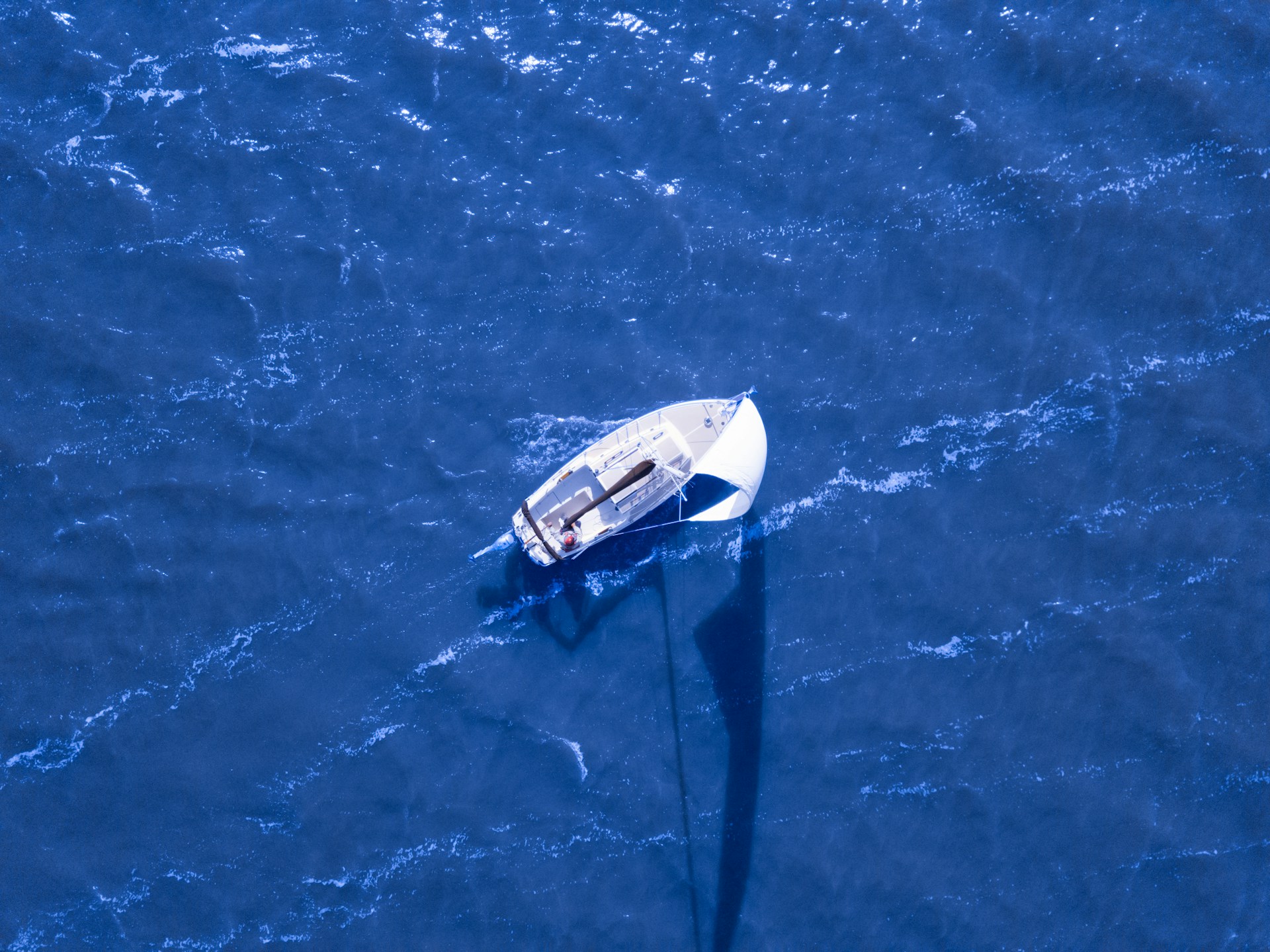
Laurent Camprubi, a seasoned sailor and adventurer, found himself in a life-threatening situation about 15 miles off the coast of Spain. He was aboard his 39-foot sailboat, the Jeanne, battling the elements and navigating his way to Cherbourg, France. His goal was to qualify for the Route du Rhum, a prestigious 4,077-mile race that takes place every four years.
Camprubi, a 62-year-old stylist for a Portugal-based fashion footwear company, had been sailing since his 20s. He considered the Route du Rhum as “the Everest of sailing.” He had been preparing for the race for months, even incorporating weight training into his routine to strengthen his core muscles for the rough seas.
However, during a much-needed rest, a wave crashed into the Jeanne, causing it to slow down and start listing to one side. Camprubi realized the keel, the weighted fin that keeps the boat upright, was lost. The Jeanne was capsizing.
“Your life depends on it. Move!” he told himself, rushing to get below deck before the boat flipped over. Once below, he found himself thrown to the ceiling as the boat violently flipped upside down. His eyeglasses, computer, and other electronics were destroyed, floating in the seawater that was rushing into the boat.
Camprubi managed to retrieve his survival kit and set off his SOS signal. He then put on his bright red survival suit, a bulky, waterproof neoprene onesie, knowing that it was his best defense against the 68-degree water that was now up to his chest.
At 8:23 p.m., the Spanish coast guard detected Camprubi’s emergency beacon. An extensive rescue operation was launched, involving two rescue ships, three helicopters, and five divers. However, the rough weather and darkness made the rescue operation extremely dangerous.
The rescuers spotted the bottom of a sailboat, missing its keel, in the swirling sea. A diver was lowered onto the hull of the boat to check for signs of life. He banged on the hull, shouting that help had arrived, but his words were carried away by the wind.
Inside the boat, Camprubi heard the banging. He tried to respond, but his arms were entangled in the sleeves of his survival suit. Then, silence. He curled up in a corner, the water rising ever higher, and waited.
“Help will come. Help will come. Help will come,” he silently recited. But a darker thought intruded: “Maybe I’ve been abandoned.”
The rescuers heard Camprubi shouting back, but they decided to postpone the rescue operation until the next morning, when the seas would be calmer and there would be daylight. The question was, would Camprubi still be alive when they returned?
Back in Marseilles, Camprubi’s partner, Virginie Philip, received a call from France’s Ministry of Defense. She was told that Camprubi’s emergency beacon had been set off. Her world fell apart.
“Is Laurent OK?” she asked when she called back. But all she could do was wait.
Philip called Richard Sautieux, Camprubi’s friend and sailing team manager, for more information. All he could tell her was that the boat had capsized, and the Spanish coast guard was involved. She spent the night in anxiety, trying to stay calm for their 12-year-old daughter, Jeanne.
Just past 8 a.m., she received another call from the Ministry of Defense. They told her that the chance of finding Camprubi alive was practically zero.
“He will fight to the end,” Camprubi’s brother assured Philip. “Trust me, if anyone is going to survive something like this, it’s him.”
Inside the capsized Jeanne, Camprubi was fighting for his life. The water level was rising, and the air bubble that was keeping him alive was shrinking. He was disoriented, tired, and hungry. But he knew he had to stay awake and keep as much of himself out of the water as possible to avoid hypothermia.
He thought about his life and the things he would miss: conversations with his three adult children from his first marriage, his son Paul’s first steps, and Jeanne’s middle school graduation.
Just before 9 a.m., after 13 hours since the boat flipped, two divers secured the Jeanne with three giant yellow buoys. They knocked on the hull, not expecting a response. But to their surprise and relief, they heard shouting. Laurent Camprubi was alive.
However, the rescue was far from over. The divers had to clear a path through the debris floating underneath the hull to access the cabin door. It was slow, dangerous work.
Camprubi knew that surviving this ordeal was still up to him. As soon as a diver opened the door, he would have to swim out fast to avoid the rush of seawater waiting on the other side. He had one chance.
The rescue began just after noon. As soon as the door opened, Camprubi swam out with all his strength. He broke through to the surface, gasping for air. A diver was waiting to attach a harness so the helicopter could hoist him aboard.
“I was so afraid you wouldn’t survive the night,” the diver admitted.
Camprubi answered: “I was so afraid you wouldn’t come back for me.”
Camprubi was hoisted aboard the helicopter at 12:35 p.m., more than 16 hours since the Jeanne had capsized. He was taken to a hospital in A Coruña, a nearby Spanish coastal city, where he was treated for exposure and hypothermia. He had lost 15 pounds during those 16 hours, all of it muscle.
But at that moment, all he wanted was to talk to Philip. When he finally got to speak to her on the phone, they both cried, unable to speak. Against all odds, Laurent Camprubi had survived.
Our Thoughts
Laurent Camprubi’s harrowing ordeal is a testament to the grit and resilience inherent in the human spirit. His experience serves as a stark reminder for all adventurers – whether seasoned or novice – about the unpredictability of nature and the importance of preparedness.
Camprubi’s preparedness in having a survival kit and an emergency beacon undoubtedly played a significant role in his survival. These tools gave him a lifeline, a way to signal his location and condition to the outside world, even when submerged in the dark, cold depths of the sea.
The mental fortitude he demonstrated is awe-inspiring. He held onto hope and remained focused on survival, even when he was entangled, cold, and alone, with his boat capsizing. His determination to survive, even in the face of such overwhelming odds, is a lesson for us all.
What’s also remarkable is the bravery and determination shown by the rescuers. Their tireless efforts, despite the perilous weather conditions and the darkness, highlight the lengths to which we go to save a fellow human being.
In the end, this story underlines the importance of survival skills and mental fortitude, and the crucial role they play in overcoming life-threatening situations.
Let us know what you think, please share your thoughts in the comments below.

Survival Stories
Rep. Mace’s Capitol Encounter Sparks Controversy and Legal Battle

James McIntyre, a 33-year-old from Illinois, has pleaded not guilty to a misdemeanor assault charge following an incident involving Rep. Nancy Mace on Capitol grounds. The alleged encounter occurred on a Tuesday night, leading to McIntyre’s arrest for reportedly assaulting a government official.
The incident unfolded when McIntyre approached Rep. Mace and offered to shake her hand. According to a police affidavit, two witnesses observed the interaction and described McIntyre as a man in his forties. When Mace extended her hand, McIntyre allegedly clasped it with both hands and “shook her arm up and down in an exaggerated, aggressive hand shaking motion.”
Witnesses managed to identify McIntyre through an internet posting, providing his name and photo to the U.S. Capitol Police. Mace corroborated the witnesses’ accounts, stating that she attempted to withdraw her hand but was unable to do so. She reported feeling intimidated and experienced pain in her wrist, arm, and shoulder following the encounter.
During the aggressive handshake, McIntyre reportedly stated, “Trans youth deserve advocacy.” Mace refrained from responding during the incident, later expressing her shock and discomfort.
After the event, Mace took to social media to inform her followers of the situation.
“I was physically accosted tonight on Capitol grounds over my fight to protect women. Capitol police have arrested him,” Mace shared in a post on X. “All the violence and threats keep proving our point. Women deserve to be safe. Your threats will not stop my fight for women!”
She continued to discuss the incident on social media, revealing in one post that she had spoken with President-elect Trump.
“Thank you, Mr. President, for checking in on me and standing up for women,” Mace wrote. “We cannot wait to see you back in the White House.”
In another post, she shared an image of herself with her arm in a sling, highlighting the physical impact of the encounter.
The incident comes amidst Mace’s outspoken opposition to transgender individuals using bathrooms that do not align with their biological gender. She has been particularly vocal against Rep.-elect Sarah McBride, a Democrat from Delaware, using the women’s restrooms on Capitol Hill.
Mace has reported receiving death threats and feels she is being “unfairly targeted” for her stance. Her proposed resolution, H.R. 1579, aims to restrict bathroom use in the House to facilities matching one’s biological sex.
Following McIntyre’s arraignment in the Superior Court of the District of Columbia, a magistrate judge ordered his release. Meanwhile, Mace’s office has not provided an update on her condition.
Let us know what you think, please share your thoughts in the comments below.
Survival Stories
Unseen Advantage: Law Enforcement’s Rapid Adoption of Optics

In the world of law enforcement and survival, the ability to quickly and accurately assess a situation can make all the difference. This is why the rapid adoption of optics by law enforcement agencies is hardly surprising. These tools provide a wealth of visual information, aiding in making more informed decisions. A key factor in the selection of these optics is the window size, but it seems that co-witness sights, which can sometimes occupy half of the entire optic window, often don’t receive the attention they deserve.
“Without question, the speed with which LE agencies have adopted optics is testament to the advantage they offer: more visual information that yields better decisions.”
Interestingly, suppressor height sights are frequently paired with optics. To comprehend why this particular sight remains a popular choice when selecting co-witnessing sights, we must journey back in time. Around 2009, shooters, both professional and non-professional, began to repurpose a solution initially designed for Close Quarters Battle (CQB) rifle work for use on pistols.
The Trijicon RMR, a compact electronic optic, was a welcome alternative to the larger optics typically seen on competition pistols. Its smaller size offered more holster options, less likelihood of snagging in the field, and a more robust window and housing. As a result, it addressed many of the issues raised by professional users, leading to a shift towards an optics sighting solution within the firearms community.
“The smaller footprint meant more holster options, less to get caught on while in the field, and a less delicate window and housing.”
This shift was spearheaded by individuals in the military, law enforcement, defensive firearms instruction, and competition professionals. With the introduction of these optics, performance improved, and new shooters were able to develop accuracy and speed more quickly. The instinctual focal plane response to stress, which previously had to be trained out, could now be utilized as an asset by Firearms Instructors working with students who had optics on their pistols.
“Performance increased, accuracy and speed developed sooner with new shooters, the intuitive and instinctual focal plane response to stress no longer needed to be trained out—and instead, the threat-focus could now be an asset used by Firearms Instructors working with students who had optics on their pistols.”
As the popularity of optics grew, the aftermarket and firearms manufacturers responded by supporting this “new” sighting system. However, one critical component of the system was often overlooked: the back-up sights. This oversight highlights the need for a comprehensive approach to firearm optics, one that considers all elements of the sighting system to ensure optimal performance and safety.
Our Thoughts
The adoption of optics in law enforcement is a testament to the technology’s effectiveness. It’s no surprise that tools that enhance visual information, thus enabling better decision-making, have become a staple in the arsenal of law enforcement agencies.
The rise of the Trijicon RMR is particularly noteworthy. Its compact size and robust design addressed many of the practical concerns of professional users, leading to a broader acceptance of optics as a sighting solution.
The benefits of these optics extend beyond their practicality. They have brought about a shift in the training of new shooters, turning the instinctual focal plane response to stress into an asset rather than a hurdle to overcome. This has undoubtedly contributed to the improved performance observed among new shooters.
However, the focus on the main optic often results in the neglect of back-up sights. This is a reminder that a comprehensive approach to firearm optics is necessary to ensure optimal performance and safety. After all, a tool is only as good as the system supporting it.
Let us know what you think, please share your thoughts in the comments below.
Survival Stories
Mental Resilience: The Overlooked Key to Survival Success
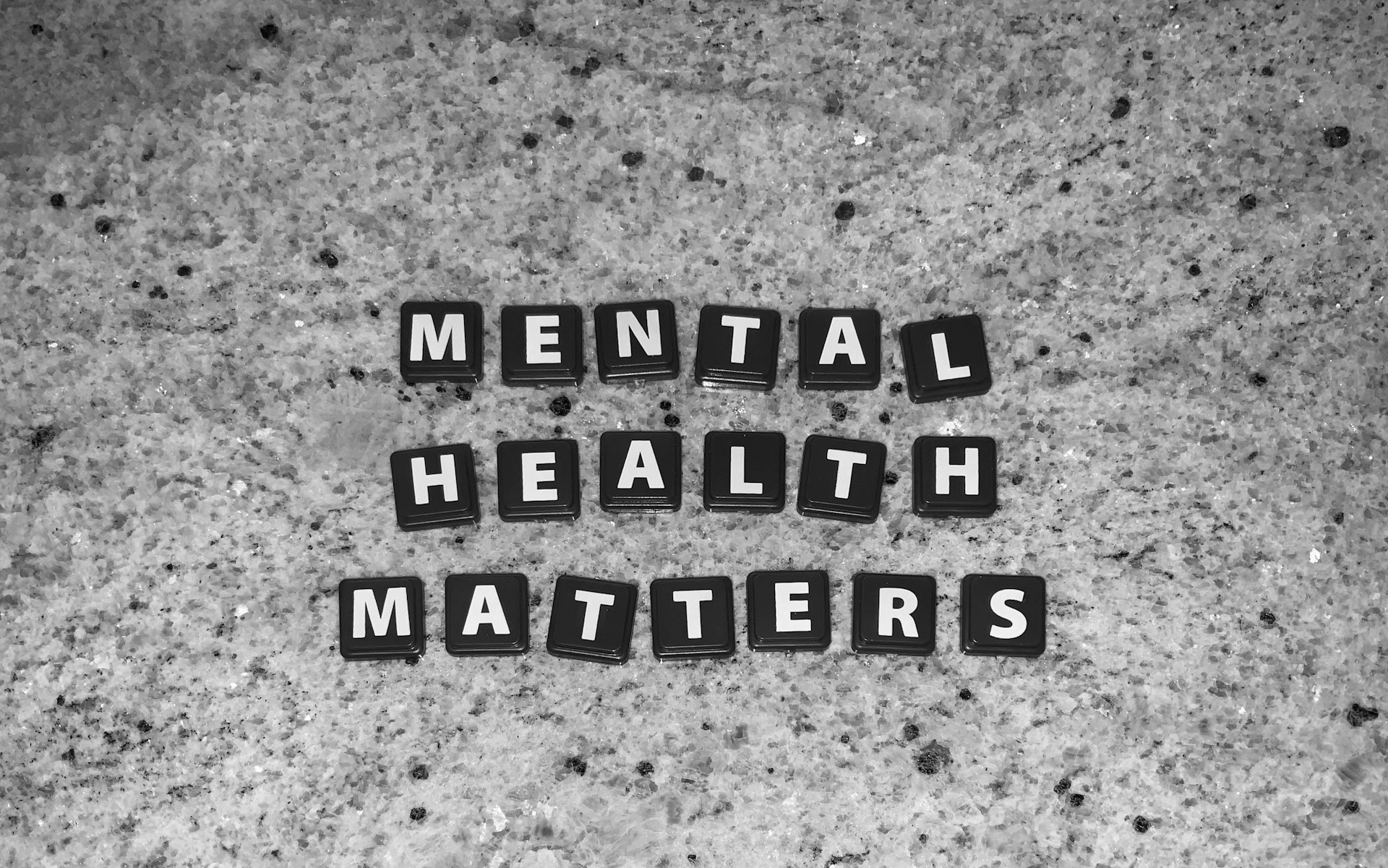
In the realm of survival, we often focus on the physical aspects: the gear, the skills, the terrain. Yet, one crucial element often overlooked is our mental health. As a seasoned survivalist and a licensed mental health therapist, I’ve experienced firsthand the importance of mental resilience in a crisis.
I recall an incident during my first exploration of Red Rock Canyon. The vast, humbling landscape was a sight to behold, but it was also a formidable challenge. Despite my preparations, I found myself lost on a wild game trail, far from the intended path.
“Okay, no big deal,” I reassured myself. “I’ll just retrace my steps.”
But the creeping sense of panic was undeniable. I was low on water, surrounded by thick brush, and far from any signal. It was in this moment that my mental health training became as crucial as my survival skills.
“If anyone can figure this out, I can.” I thought. Or rather, tried to convince myself….
The human brain has a built-in survival mechanism known as the fight-flight-freeze response. When faced with danger, our heart rate increases, our pupils dilate, and our breathing becomes rapid. While these physiological changes can enhance our strength and speed, they can also lead to panic attacks, which can be detrimental in a survival scenario.
Soldiers and first responders are trained to manage this response, and so can civilians. Understanding mental health first aid can be a lifesaver in personal emergencies or when trying to calm someone else in a crisis.
“Okay…” I thought, “let’s just backtrack a little. See if I can’t find the main trail.”
I remembered the acronym S.T.O.P., taught in wilderness survival classes: Sit, Think, Observe, Plan. I sat down, focused on my breathing, and began to regain control of my racing thoughts.
“Breathe.” I thought. “In through the nose, slow. SLOW. Hold it for a few seconds. Now release through the mouth even slower. Pause. Repeat.”
I knew I had to control my thoughts to improve my feelings and make good decisions. Catastrophic thinking like “I’m gonna die” or “What if a rattlesnake bites me?” could trigger panic mode.
“Okay, what do we know?” I thought. “I know I can’t be too far off-course, no more than a couple miles. I know a few people knew generally where I was going (but not the specific trailhead) and that I expected to be back by nightfall. I know I have survival training and some kit with me that would help me make it through the night if needed. I can do this.”
After observing my surroundings and assessing my resources, I made a plan. I decided to head in the direction of what I believed to be a road, using a large branch to tap the ground in front of me to ward off any potential rattlesnakes.
In the end, I made it back to my vehicle without having to spend the night in the desert. The experience was a stark reminder of the importance of mental health in survival situations.
In the aftermath of a crisis, people will be in panic mode. Knowing how to guide someone through the stresses of a crisis can help mitigate some of the negative effects of traumatic events.
First, ensure the scene is safe. Then, assess the group, find helpers, and triage the situation. Ground the person by asking them to describe their surroundings and their feelings. Encourage slow, deliberate breathing and validate their experiences.
Long-term effects of repeated activation of the fight-flight-freeze response can include panic attacks, nightmares, and flashbacks. If you’re prone to these symptoms and find the techniques described here aren’t helping, consider seeking help from a licensed therapist.
Remember, it’s not a matter of being weak or strong. Some of the bravest individuals I’ve worked with have sought therapy for their symptoms. It takes great strength and bravery to ask for help.
Since my experience in Red Rock Canyon, I’ve incorporated mental health first aid and awareness into my survival teachings. I’ve also adjusted my approach to hiking, ensuring I communicate my exact route and expected return time, carry more water, and stay focused on the trail.
Survival isn’t just about the physical. It’s about the mental too. And with the right skills and mindset, we can navigate any crisis with resilience.
Our Thoughts
This compelling account underscores the often overlooked but critical role mental health plays in survival scenarios. The author’s experience in Red Rock Canyon drives home the importance of not just physical preparation, but mental preparedness as well.
The fight-flight-freeze response, while instinctual, can be detrimental if not properly managed. As survivalists, we should heed the author’s advice and learn to control this response, much like soldiers and first responders are trained to do.
The S.T.O.P. method is a useful tool in regaining control of our thoughts and feelings in high-stress situations. It’s not just about physical survival skills, it’s about mental resilience and clarity of thought.
Moreover, the importance of understanding mental health first aid cannot be overstated. It can be a lifesaver, not just for ourselves, but for others in crisis.
Ultimately, the author’s story is a reminder that survival isn’t just about the gear, the terrain, or the skills — it’s about the mind too. And in the face of adversity, with the right mindset, we can navigate through any crisis with resilience.
Let us know what you think, please share your thoughts in the comments below.
-
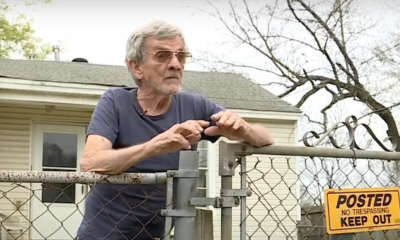
 Tactical1 year ago
Tactical1 year ago70-Year-Old Fends Off Intruder with Lead-Powered Message
-
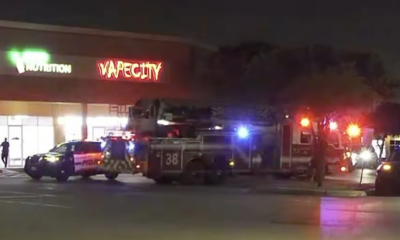
 Tactical1 year ago
Tactical1 year agoVape Shop Employee Confronts Armed Crooks, Sends Them Running
-

 Preparedness11 months ago
Preparedness11 months agoEx-Ballerina’s Guilty Verdict Sends Tremors Through Gun-Owner Community
-

 Preparedness10 months ago
Preparedness10 months agoGood Samaritan Saves Trooper in Harrowing Interstate Confrontation
-
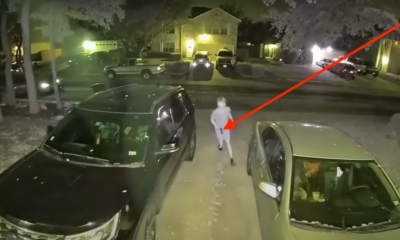
 Tactical1 year ago
Tactical1 year agoMidnight SUV Theft Interrupted by Armed Homeowner’s Retaliation
-

 Survival Stories2 years ago
Survival Stories2 years agoEmily’s 30-Day Experience of Being Stranded on a Desert Island
-

 Preparedness10 months ago
Preparedness10 months agoArizona Engineer’s Headless Body Found in Desert: Friend Charged
-

 Preparedness10 months ago
Preparedness10 months agoBoy Saves Dad from Bear Attack with One Perfect Shot
Angelo Guida
March 13, 2024 at 9:57 pm
What a harrowing experience! But being prepared for the worst is of prime importance. This was physically conditioned to take what came and he preserved despite the knowledge that things could get worse in the blink of an e
Avery brave and lucky man.
Sir, I applaud you.
Godspeed!